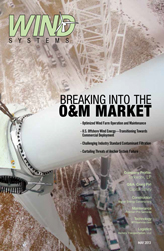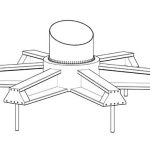As the saying goes, “the devil is in the details.” This holds true when budgeting a transportation project. Items are often left out of the budgeting process that are not accounted for when the final tab is added up. These unexpected, unexplained charges cause arguments between clients and vendors, and can cause the relationship to be damaged. This angst could have been avoided with a better budget process.
Before I go into the details of what should be included in a project transportation budget, we should first address why and how such budget gaps accrue. First, often a customer is inclined to accept the lowest bid without confirming if all quotes are equal. Bids often don’t meet the “apples to apples” comparison test. Assumptions made without taking this variance into account often prove to be false. Second, suppliers often fail to include costs related to circumstances that they hope will not occur but often do. I call this the “ask for forgiveness rather seek permission” method of quotation. The best way to counteract budget gaps is to be totally transparent in the process while maintaining a consistent punch list so that all vendors are quoting the same items.
I suggest that the transportation budget be broken into three categories: Mobilization, Execution and De-Mobilizations. Budget items and associated costs should be considered for each category. As the category titles suggest, there is a natural flow in the budgeting process: ramping up, doing the work and ramping down. There may be similar tasks in each category, but the associated costs may vary. For example: In the mobilization phase, welding may be needed to attach a fixture to a rail car. Consequently, this welding will need to be removed from the fixture during de-mobilization. The two tasks are related, but the costs are not the same.
In the mobilization category, items to be considered are: design and engineering costs; installation costs; procurement of materials; logistics costs associated with preparing for the work; and acquisition of information. As the category title indicates, mobilization involves getting everything ready and mobilized in preparation for work to start. This includes understanding how to position resources, information, and money. An example of positioning of information is issuing the proper permits are in place before work begins. This phase is critical to the success of the overall project. The more issues are understood and anticipated, the more costs become transparent and lessen the chances for budget surprise down the road.
The execution phase is how you use the resources, information, and money to do the work. If the budgeting process was effective, you are matching actual costs to budgeted costs with very few surprises. Beware that this is the category that often vendors skimp on during the bidding process to earn a job, with hopes of recovering costs later. Once the project is initiated, the execution phase is where the time, resources and scope that were estimated and budgeted are compared to the actual. This is where the game is actually being played and you are keeping score. To do this, I like to use variance reporting to track project progress.
De-mobilization costs are often neglected to be considered or short-budgeted. But the money and time is real when it comes to ramping down a project. Clean-up and restoration costs should be included in this category. Movement of resources to a pre-project stage also has to be considered. I like to emphasize this category with clients since it is the one most underestimated and least understood.
So how do you avoid budget gaps, unnecessary conflict and strained relationships between clients and suppliers? The answer truly is: “the devil is in the details.” The more thorough and detailed the budget is in all three categories, the easier it is to compare bids, understand true costs, and execute the project on time and budget. Always ask for the details of the budget. This allows you to compare bids and ensure that you are comparing apples to apples.

































